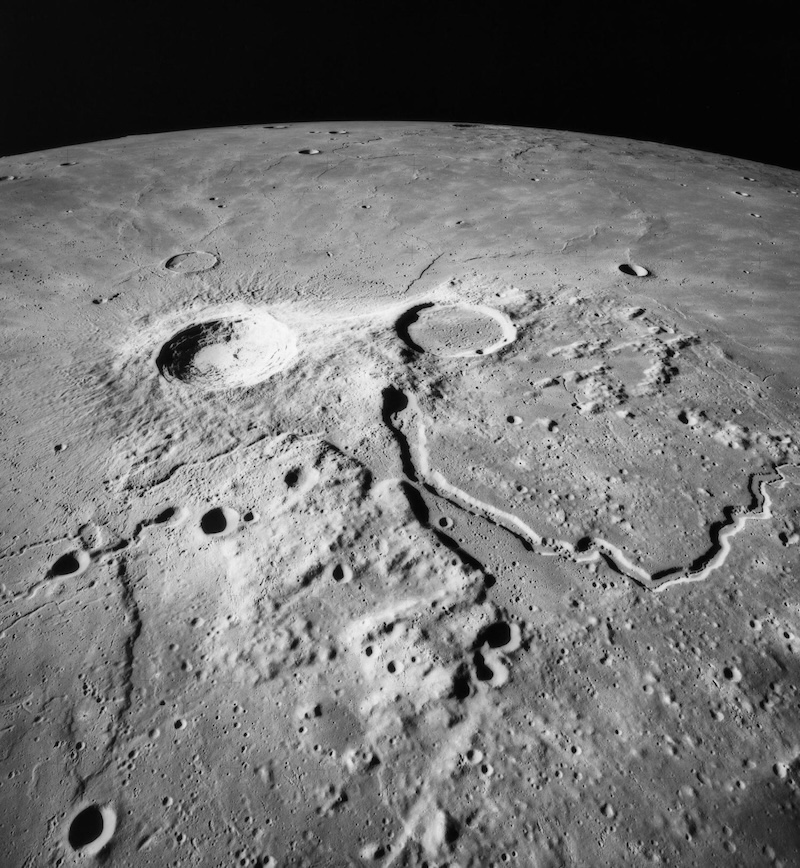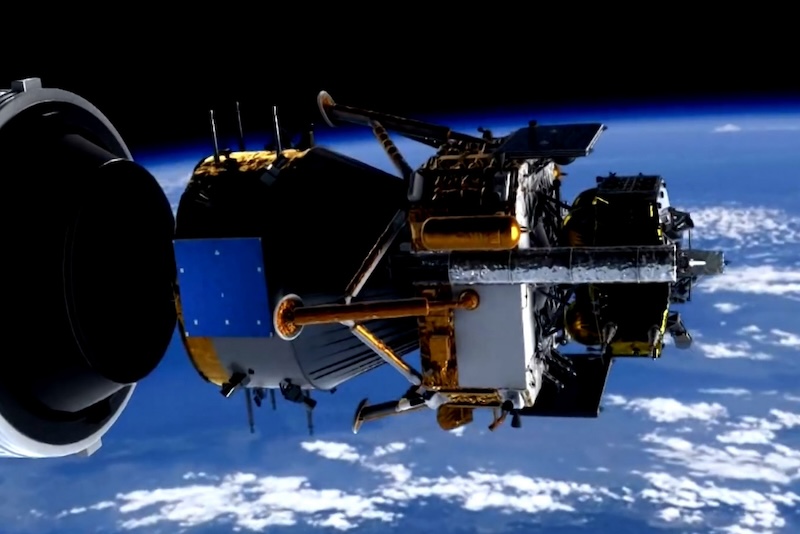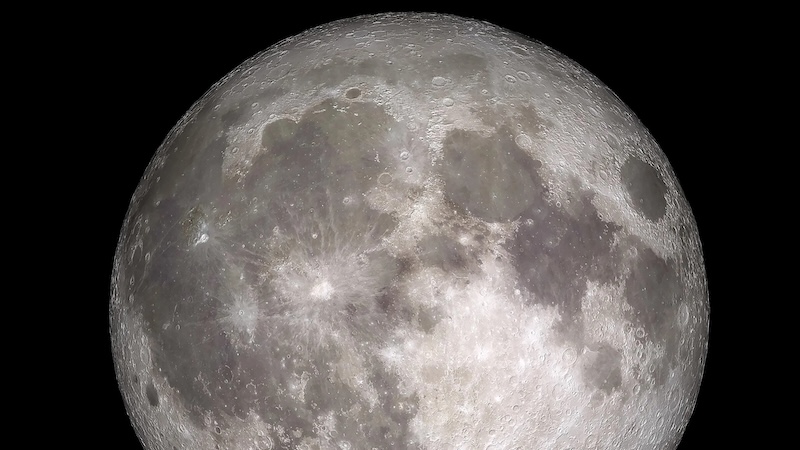- The moon was a volcanically active world billions of years ago. But could it have had active volcanoes more recently too?
- China’s Chang’e 5 spacecraft brought samples of the moon back to Earth for study in 2020.
- The moon was volcanically active only 120 million years ago, according to a new study by scientists with China’s space agency.
Volcanic eruptions on the moon
The moon was volcanically active in the past. The lunar maria, composed of now-hardened basaltic lava, are clear evidence of that. But when did the volcanoes stop erupting? Scientists at the Institute of Geology and Geophysics of the Chinese Academy of Sciences (IGGCAS) said on September 5, 2024, that they found new evidence for long-lived volcanism on the moon. They discovered tiny glass beads in samples brought back to Earth by China’s Chang’e 5 mission. Analysis of the beads indicates volcanoes were erupting on the moon as recently as 120 million years ago, while dinosaurs were still roaming Earth.
The researchers, led by Bi-Wen Wang and Qian W.L. Zhang, published their peer-reviewed findings in the journal Science on September 5, 2024. There is also a related Perspective paper published on the same day in Science.
Tiny glass beads are clues to the moon’s volcanoes
Until now, the most recent volcanism on the moon was dated to about 2 billion years ago. That came from analysis of lunar samples of volcanic basalt from the Apollo, Luna and Chang’e 5 missions. But now, the new study of Chang’e 5’s samples – brought back to Earth on December 16, 2020 – shows volcanism persisted for much longer than scientists previously thought. The paper stated:
There is extensive geologic evidence of ancient volcanic activity on the moon, but it is unclear how long that volcanism persisted. Magma fountains produce volcanic glasses, which have previously been found in samples of the moon’s surface.
The findings were a surprise for scientists. As Julie Stopar at the Lunar and Planetary Institute, who was not involved with the research, told AP:
It was a little bit unexpected.
The researchers examined over 3,000 tiny glass beads in the lunar samples. They studied their chemical compositions, physical textures and sulfur isotopes to distinguish potential volcanic glasses from other glasses produced by meteorite impacts. The beads were, indeed, volcanic in origin. The volcanic beads contained large amounts of potassium, phosphorus, thorium and some rare-earth elements, known as KREEP elements. Those elements can produce radioactive heating. This can melt rocks in the moon’s mantle and produce small amounts of magma.

The moon’s volcanoes were active 120 million years ago
Next, the researchers used the uranium-lead method of radiometric dating to figure out how old the beads were. As it turned out, the beads were surprisingly young, geologically speaking. They formed only 123 ± 15 million years ago. That is much more recent than previous samples studied from the moon.
We investigated ~3000 glass beads in lunar soil samples collected by the Chang’e 5 mission and identified three as having a volcanic origin on the basis of their textures, chemical compositions, and sulfur isotopes. Uranium-lead dating of the three volcanic glass beads shows that they formed 123 ± 15 million years ago.

Implications for geophysical models and other rocky bodies
The new results also place constraints on current geophysical models of the moon’s interior. They also suggest many smaller rocky bodies, like the moon, might be able to remain geologically active until very late in their evolution.
Last July, an international team of researchers reported the first confirmed discovery of an ancient lava tube on the moon. The researchers used data from NASA’s Lunar Reconnaissance Orbiter (LRO) find the now-empty lava tube below a previously discovered cave-like pit in Mare Tranquillitatis. This mare was also the location of the first crewed landing on the moon by Apollo 11 in 1969.
Bottom line: Scientists in China, studying samples brought back by the Chang’e-5 mission, say that the moon’s volcanoes were active as recently as 120 million years ago.
Source: Returned samples indicate volcanism on the Moon 120 million years ago
Source: How young is volcanism on the moon?
Via Phys.org
Via AAAS/ EurekAlert!
Via AP
Read more: Fire and ice: Moon water from ancient volcanoes?
Read more: 1st lunar lava tube discovered by NASA moon orbiter





No comments! Be the first commenter?